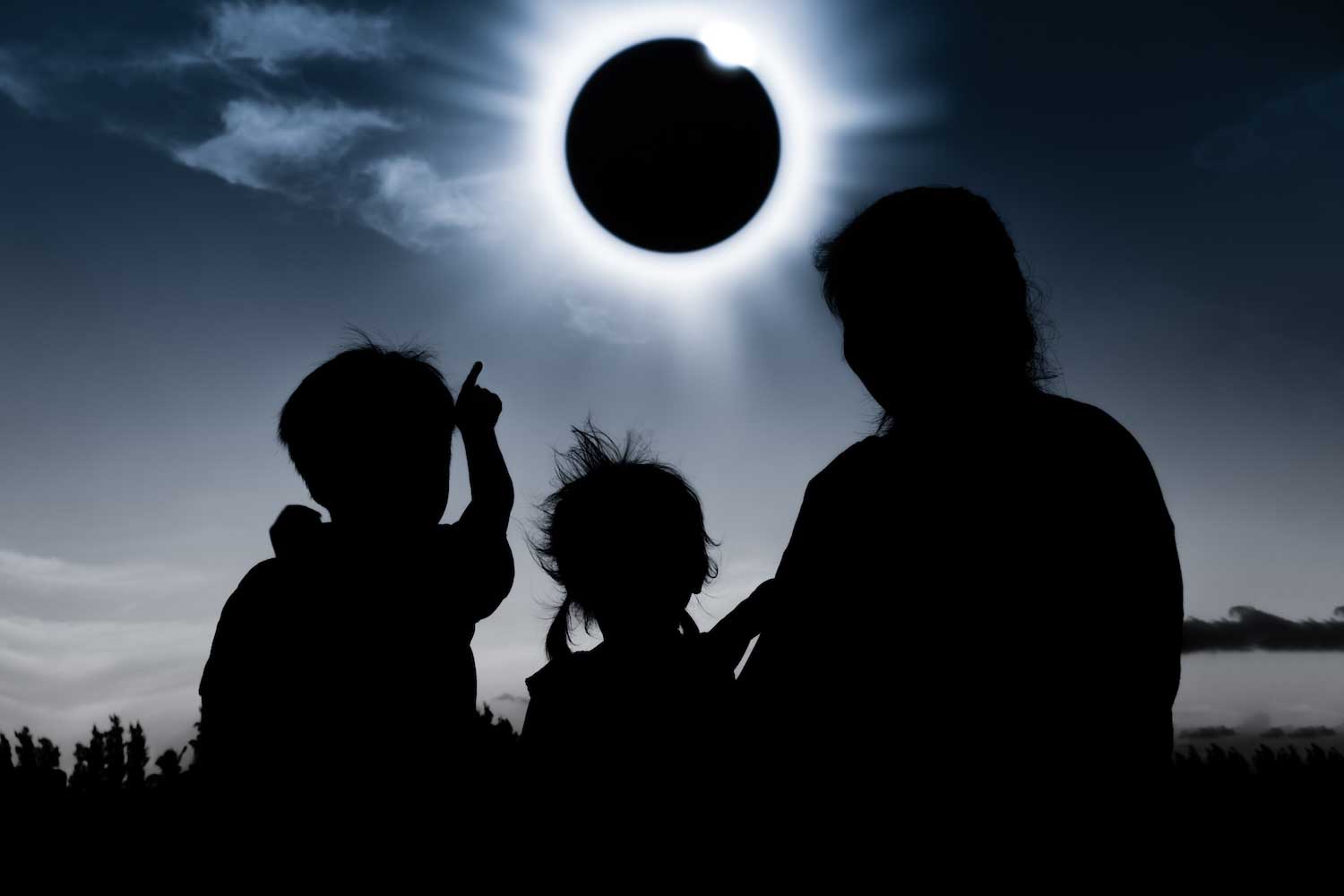Keep your fingers crossed for clear skies for April 8 total solar eclipse

Sky watching is usually best done at night, but in April the headlining event will be in broad daylight: a total solar eclipse on April 8.
A total eclipse occurs when the moon passes between Earth and the sun. They are rare events, and every time they occur they can only be seen from a small portion of Earth, National Geographic reports. For the April 8 eclipse, northern Illinois isn't quite in the path of totality — the area where the entire surface of the sun will be covered by the moon at its peak — but we aren't far from it, which means we will see a pretty good show here in northern Illinois.
The path of totality passes through southern Illinois, and here in Will County more than 90% of the sun's surface will be covered by the moon when the eclipse reaches its peak at 2:07 p.m. You can solar-brate with us at three Forest Preserve viewing parties from 1:30 to 2:30 p.m. April 8 being hosted at Goodenow Grove Nature Preserve, Hickory Creek Preserve — LaPorte Road Access and Whalon Lake.
The total solar eclipse isn't the only thing making celestial headlines in April. A large planet traveling toward the inner solar system may also be visible to even the unaided eye at times in April. The planet, called 12P/Pons-Brooks, will be easy to locate on April 12, when it will be near Jupiter shining brightly in the sky, National Geographic reports. Another good viewing opportunity will be April 21, when it will reach its closest point to the sun and may be at its brightest in the dark sky. In places that experience the path of totality for the April 8 eclipse, people may also be able to catch sight of the comet near the darkened sun with the help of binoculars or a telescope. (Remember that it is not safe to view a solar eclipse without proper eyewear to protect your eyes.)
By comet standards, 12P/Pons-Brooks is huge, three times larger than Mount Everest, National Geographic reports. It's a periodic comet, which means it passes through the inner solar system on a fixed schedule. In the case of 12P/Pons-Brooks, it visits the inner solar system every 71 years.
About a week after the hubbub surrounding the total solar eclipse dies down, the night sky will be alight with meteor shower activity once again. After a quiet period of meteor activity stretching back to January, both the Lyrids and eta Aquariids meteor showers begin April 15. The eta Aquariids is the longer lasting of the two, lasting until May 27 while the Lyrids ends on April 29, according to the American Meteor Society.
Peak activity for the Lyrids meteor shower will be the night of April 21 to 22. Although it typically produces a good number of shooting stars and even some fireballs, viewing opportunities will be hindered this year because the moon will be nearly dull during the peak, the meteor society reports.
The eta Aquariids meteor shower will peak the night of May 4 into 5, and the moon will be only 14% full that evening. The eta Aquariids are best viewed in the southern hemisphere, but you can still see meteors streaking across the night sky here in the northern hemisphere. This year is expected to be a good showing for the eta Aquariids because of interactions with particles from Jupiter, the meteor society reports.
April's full moon will be April 24, with it reaching its fullest point at precisely 6:49 p.m. The most common nickname for the April full moon is the pink moon, a reference to a specific flower — creeping phlox — that blooms at this time of year in many areas.
Creeping phlox, also known as moss phlox or moss pink, is a perennial groundcover that typically blooms between March and June, according to the Lady Bird Johnson Wildflower Center. It can grow in many different types of soil, including poor-quality soil, and it can spread quickly, often covering large swaths of the ground. Blooms are usually pink, giving rise to the pink moon name, but they can also be purple or white.
Other seasonally inspired names for the April full moon include the breaking ice moon, frog moon, moon when the geese lay eggs and moon when the streams are navigable again, according to the Old Farmer's Almanac.
